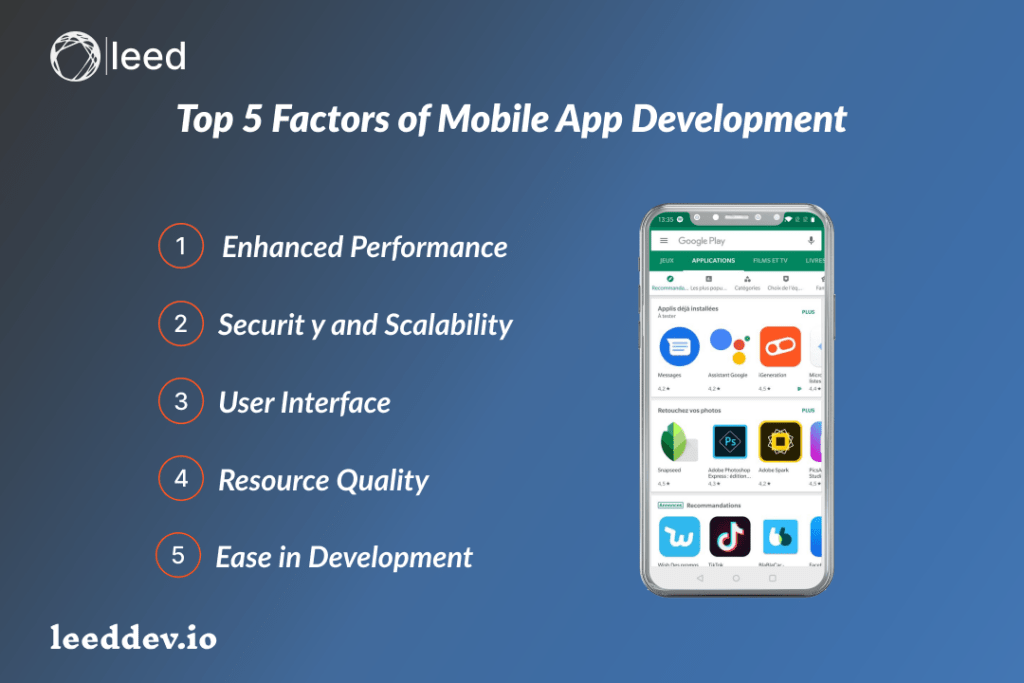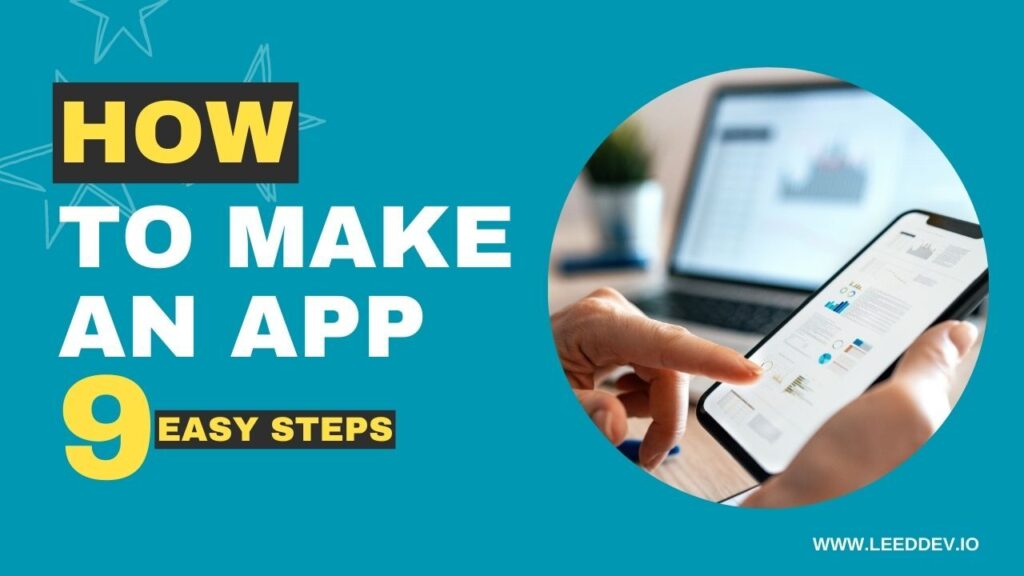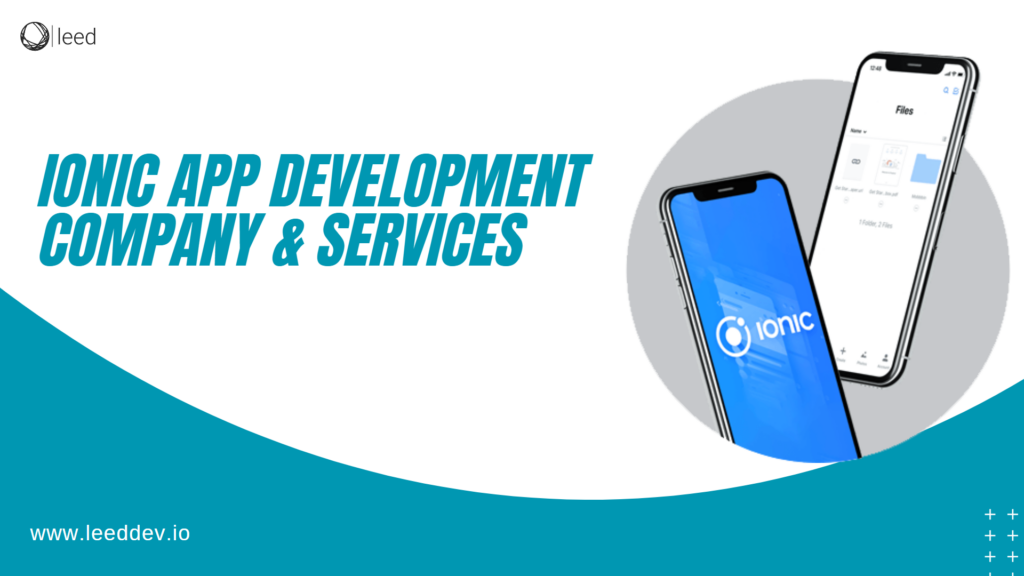The need for creative and easy-to-use mobile applications is growing in the modern digital age, as smartphones have become a necessary part of our daily lives. To satisfy users’ changing needs and maintain a competitive edge, developers need to stay current on the newest trends and technologies influencing the app development industry. This blog post explores the next-generation innovations propelling the field forward.
Objectives of Next-Gen App Development
The following are the primary goals or objectives of next-generation app development:
- Emerging technologies like 5G, AI, and ML can enhance communication, AR/VR experiences, and file downloads.
- Adapting to the changing Web3 environment involves integrating NFTs with decentralized applications. Creating user-friendly interfaces and robust security measures is crucial.
- Embracing cutting-edge technologies like the metaverse and redefining user interaction can also enhance user experience.
- Staying ahead of trends requires constant observation of consumer preferences.
- Next-generation app development aims to deliver engaging, safe, personalized mobile experiences. This exceeds user expectations in an ever-changing technological landscape.
App Development of Next-Gen: an In-depth Look
The mobile app market constantly evolves due to revolutionary technological developments and continuously changing user needs. As we move forward, the creation of next-generation apps is being shaped by a few key trends:
Unlocking 5G’s Potential
Revolutionary Speed and Ultra-Low Latency: 5G technology transforms mobile connectivity 100 times faster than its predecessor. This corresponds to:
Without effort Downloading: Big files like high-definition films download quickly, saving you time.
Real-Time Interactions: Lag-free and immersive experiences are produced by apps such as AR/VR and multiplayer games.
Improved Cloud Gaming: It’s now possible to stream high-performance games straight to your device, blending the distinction between console and mobile gaming.
AI and ML
Artificial intelligence and machine learning play a role in both personalization and prediction; let’s discuss each in detail:
Hyper-Personalization
To customize user experiences within the app, AI and ML algorithms examine user behavior and preferences. Consider:
- Curated Content Feeds: News apps recommend articles based on your interests, saving you time from having to click through pointless material.
- Personalized Suggestions: Online shopping apps make product recommendations based on your browsing and purchase history.
- Adaptive learning tools: Learning paths and difficulty levels are modified by educational apps in response to user comprehension and progress.
Predictive analytics
By foreseeing user behavior, applications can proactively provide pertinent advice and data, which can result in:
- Contextual Assistance: Based on current traffic conditions, navigation apps suggest different routes and anticipate your destination.
- Proactive Reminders: To help you stay on top of things, productivity apps let you know when tasks and deadlines are coming up.
- Brilliant Shopping Experiences: Shopping apps suggest products based on previous purchases and browsing activity, saving time and effort.
Metaverse
When we step into the metaverse, there is a world of possibilities with immersive social interactions:
Immersive Social Interactions
The metaverse, a virtual world where users can interact and socialize, opens doors to:
- Virtual Workspaces: Teams collaborate and hold meetings in immersive environments, fostering a sense of presence and shared experience.
- Social Events and Entertainment: Attend virtual concerts, watch movies together, or play games, all within the metaverse.
- Integration with Real-World Applications: Apps bridge the gap between the physical and virtual, allowing users to interact with real-world objects and experiences within the metaverse.
Web3 and Blockchain
In Web3 and Blockchain, we will focus on decentralized applications and NFT integration:
Decentralized Applications (dApps)
Built on blockchain networks, dApps offer increased transparency, security, and user control. This paves the way for:
- Secure and Transparent Transactions: Financial apps leveraging dApps provide fast and transparent transactions, eliminating the need for intermediaries.
- Empowering Users: dApps grant users greater control over their data and digital assets, fostering a more secure and user-centric internet experience.
NFT Integration
Apps can be developed to manage, trade, and interact with non-fungible tokens (NFTs), enabling:
- Digital Ownership and Monetization: Users can own and trade unique digital assets like artwork, collectibles, and in-game items.
- New forms of Engagement: Apps can integrate NFT functionalities to enhance user engagement and create unique experiences.
Adapting to Evolving Devices
In the evolution of app development, there is also the evolution of device sizes and structures like foldable and wearables like:
Optimizing for Foldable Devices
As foldable phones and tablets become more prevalent, apps need to adapt to:
- Multi-window Functionality: Leverage the expanded screen space to display multiple app windows simultaneously for efficient multitasking.
- Seamless Transition: Ensure smooth transitions between folded and unfolded states, maintaining consistent functionality and user experience.
Wearable Tech Integration
Smartwatch and other wearable app development demands focus on:
- Intuitive UI/UX: Design interfaces with clear visuals and minimal text optimized for smaller screens and touch interaction.
- Voice Interaction: Integrate voice commands for convenient and hands-free app control.
- Efficient Battery Usage: Develop energy-efficient apps to ensure optimal battery life on wearable devices.
User Experience (UX) and Security
User experience and security are two of the most important things to keep in mind before app development. It should include:
Intuitive and User-Friendly Interface
Apps should prioritize user-friendliness with:
- Simple and clean UI: Ensure easy navigation and understanding, avoiding cluttered interfaces that overwhelm users.
- Intuitive interactions: Design user interactions that are natural and intuitive, reducing the learning curve and enhancing usability.
Robust Security Measures
Protecting user data and privacy is paramount, requiring:
- Strong Authentication: Implement secure login methods like multi-factor authentication to prevent unauthorized access.
Key App Development Concepts and Process
For app development, follow the concepts and processes the app development companies use.
Software Development
There are two main approaches to app development:
- Native Development involves building apps using platform-specific programming languages and tools (e.g., Swift for iOS development, Java for Android development). Native apps offer the best performance, user experience, and access to device features, but they require separate codebases for different platforms.
- Hybrid Development: This approach uses a single codebase built with web technologies like HTML, CSS, and JavaScript, wrapped in a native container. Hybrid apps offer faster development time and easier cross-platform deployment but may have limitations in performance and access to device features compared to native apps.
Each approach has its benefits and drawbacks, and the choice depends on factors like the app’s complexity, target platforms, desired performance, and budget.
UI/UX Design
User Interface (UI) and User Experience (UX) design are crucial for creating aesthetically pleasing apps that are easy to use. UI design focuses on the app’s visual elements, like layouts, colors, and typography. UX design focuses on the overall user experience, ensuring the app is intuitive, efficient, and enjoyable.
Frontend vs. Backend Development
An app consists of two main parts:
- Frontend Development (Client-side): The user sees and interacts with this, typically built with web technologies or native development tools. It handles user interface elements, user input, and presentation of data.
- Backend Backend (Server-side): This is the ‘behind the scenes’ part, responsible for processing data, storing information, and handling server-side logic. It interacts with databases and external services and manages user accounts.
The front end and back end work together seamlessly to deliver a complete app experience.
App Prototyping
App prototyping is the process of creating a basic, interactive model of the app before full Development begins. It’s a cost-effective way to visualize the app’s functionality, user flow, and design, allowing for early feedback and iteration.
Prototypes can be low-fidelity (simple sketches) or high-fidelity (interactive mockups) and help identify potential usability issues, test user interactions, and refine the app’s concept before significant resources are invested in Development.
App Testing
Thorough testing is crucial to ensure the app functions correctly, performs smoothly, and is secure. This involves various types of testing, including:
- Functionality Testing: Verifies features work as intended.
- Usability Testing: Evaluates user experience and identifies potential usability issues.
- Performance Testing: Measures app responsiveness and stability under different loads.
- Security Testing: Identifies and mitigates potential security vulnerabilities.
Comprehensive testing across various devices and situations helps ensure the app delivers a positive and reliable user experience.
App Deployment
Once the app is thoroughly tested and approved, it must be available to users. The deployment process depends on the chosen platform:
- App Stores: Native iOS and Android apps are submitted to the respective app stores (App Store and Google Play Store) for review and distribution.
- Web Platforms: Web apps can be deployed directly on hosting platforms or content delivery networks for accessibility through web browsers.
App deployment typically involves configuring app store listings, managing app versions, and ensuring smooth availability for users.
Conclusion
In the fast-paced world of mobile app development, staying ahead requires a keen understanding of emerging trends and technologies. The next generation of apps is defined by revolutionary advancements such as 5G connectivity, AI-driven personalization, integration with the metaverse, and blockchain-powered decentralization.
These innovations reshape user experiences, drive engagement, and unlock new possibilities for creativity and monetization. By embracing these trends and prioritizing user-centric design and security, developers can create immersive, secure, and personalized mobile experiences that exceed user expectations and stand out in a crowded marketplace.
FAQs
What is the significance of 5G in next-gen app development?
5G revolutionizes mobile connectivity with blazing-fast speeds and ultra-low latency, enabling seamless real-time interactions, quick downloads, and enhanced cloud gaming experiences.
How do AI and ML enhance user experiences in mobile apps?
AI and ML algorithms power hyper-personalization by analyzing user behavior and preferences, enabling curated content feeds, personalized recommendations, and proactive assistance.
What opportunities does the metaverse present for app developers?
The metaverse offers immersive social interactions, virtual workspaces, and integration with real-world applications, creating new avenues for socializing, collaboration, and entertainment.
How does blockchain technology impact app development?
Blockchain enables decentralized applications (dApps) that offer increased transparency, security, and user control. It also facilitates NFT integration for digital ownership and monetization.
How should developers adapt apps for foldable devices and wearables?
For foldables, developers should optimize for multi-window functionality and ensure smooth transitions between folded and unfolded states. For wearables, focus on intuitive UI/UX, voice interaction, and efficient battery usage.




